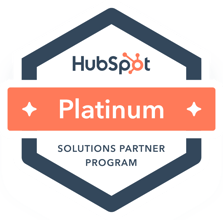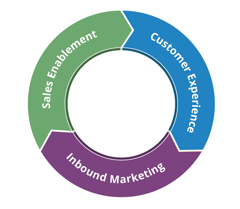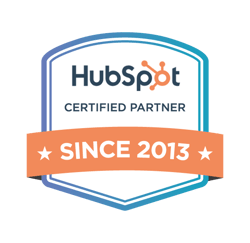Understanding buyer intent is crucial for modern marketers and sales teams, as it serves as the foundation for crafting effective marketing strategies and sales approaches. By gaining a deep understanding of buyer intent, businesses can not only identify prospects who are actively considering a purchase but also anticipate their needs and preferences. This insight allows companies to tailor their messaging and offers, ensuring they resonate with potential customers at the right time. The ability to pinpoint these prospects can dramatically improve conversion rates by focusing efforts on those most likely to make a purchase, thereby maximizing the return on investment for marketing campaigns.
Additionally, understanding buyer intent helps optimize outreach efforts by enabling marketers to deliver personalized content and offers that align with the prospect's current stage in the buying journey. This targeted approach not only enhances the effectiveness of marketing initiatives but also shortens the sales cycle by reducing the time it takes to move prospects from interest to decision. HubSpot, a leading CRM and marketing automation platform, provides a comprehensive suite of tools designed to help businesses collect, analyze, and act on buyer intent data effectively. These tools empower companies to transform raw data into actionable insights, allowing them to make informed decisions that drive more sales and enhance customer engagement. In this blog, we'll explore how you can leverage HubSpot to gather and utilize buyer intent insights, ultimately driving more sales and fostering deeper customer relationships.
What Is Buyer Intent Data?
Buyer intent data refers to a collection of signals and behaviors that provide insight into a prospect's likelihood of making a purchase. These signals can encompass a wide range of activities, such as website visits, where the frequency and duration of visits to specific pages can reveal a prospect's interest level. Content engagement, including the types of articles or resources a prospect interacts with, can further indicate their preferences and needs. Email interactions, such as opens, clicks, and responses, offer additional layers of understanding regarding a prospect's engagement and interest.
Other digital touchpoints, such as social media interactions, webinar attendance, and online reviews, also provide valuable data points. By meticulously analyzing this comprehensive data set, businesses can accurately identify high-intent leads, allowing them to tailor their outreach strategies with precision. This enables companies to craft personalized marketing messages and sales approaches that resonate with the prospect's specific interests and stage in the buying journey, ultimately enhancing the likelihood of conversion.
How HubSpot Helps Capture Buyer Intent Data
HubSpot offers a variety of features to track and analyze buyer intent data. Here are some of the key tools you can leverage:
1. Website Tracking and Behavioral Analytics
HubSpot’s tracking code is a crucial tool that enables businesses to gain a comprehensive understanding of how visitors interact with their website. By embedding this code, companies can track and analyze a variety of key intent signals with precision, providing valuable insights into visitor behavior and interest levels. These signals include:
- Pages viewed: This involves monitoring which specific pages visitors are accessing, such as pricing pages, product demos, and case studies. By identifying the types of content that attract attention, businesses can gauge the topics and offerings that resonate most with their audience.
- Time spent on key pages: Tracking the duration visitors spend on particular pages helps businesses understand the depth of interest in specific content. Spending a longer time on a page may indicate a higher level of engagement and interest, suggesting that the visitor is seriously considering the information presented.
- Repeat visits to high-intent sections: Observing visitors who return to specific sections of the website multiple times can be a strong indicator of intent. These repeat visits often signify that the visitor is in the decision-making phase and is revisiting information to solidify their understanding or compare options.
- Clicks on CTAs and forms: Monitoring interactions with calls-to-action (CTAs) and form submissions provides direct insight into a visitor's willingness to engage further. Clicks on CTAs, such as "Request a Demo" or "Download Now," and completed forms can reveal a visitor's readiness to take the next step in the buying process.
By leveraging these insights, businesses can tailor their marketing strategies and sales approaches to better meet the needs and interests of their potential customers, ultimately enhancing the effectiveness of their outreach efforts.
2. Lead Scoring for Intent-Based Prioritization
HubSpot’s lead scoring system is a powerful tool that enables businesses to assign specific values to various user actions, effectively quantifying the level of interest and engagement each prospect demonstrates. For instance, when a potential customer downloads a whitepaper, it might be assigned a value of +10 points, reflecting a moderate level of interest in the company's offerings. If the same prospect takes a step further and requests a demo, this action could be valued at +20 points, indicating a higher level of intent and a greater likelihood of conversion. Additionally, if a prospect visits the pricing page multiple times. In that case, this behavior might be assigned +15 points, as it suggests a keen interest in the product's cost and a readiness to make a purchasing decision. By systematically evaluating these actions and assigning corresponding scores, businesses can create a prioritized list of high-intent leads. This scoring system enables sales teams to efficiently focus their efforts on prospects who are most likely to convert, ensuring that resources are allocated effectively and the sales process is streamlined for maximum impact.
3. Email and Engagement Tracking
HubSpot meticulously tracks email opens, clicks, and responses, providing businesses with a comprehensive understanding of a prospect's engagement and interest levels. This detailed tracking allows companies to discern which emails capture attention and which content resonates most with their audience. By analyzing these engagement metrics, businesses can segment leads into distinct categories based on their level of interaction and interest. This segmentation allows sales teams to craft highly personalized follow-up communications tailored to the specific interests and behaviors of each lead. As a result, sales teams can nurture prospects more effectively, delivering targeted messages that address individual needs and preferences, which ultimately enhances the likelihood of conversion and fosters stronger customer relationships.
4. CRM Data Enrichment and Integrations
HubSpot seamlessly integrates with various third-party intent data providers, such as Bombora and ZoomInfo, which significantly enhances a business's ability to gather comprehensive insights into potential leads. By tapping into these external intent signals, companies can enrich their existing lead data with valuable information that might not be captured through their channels alone. This integration is particularly beneficial for identifying prospects who are actively researching industry solutions on websites other than your own, providing a broader view of their interests and behaviors. For instance, if a potential customer frequently visits competitor sites or engages with content related to your industry, these signals can be captured and analyzed to understand better their needs and readiness to purchase. This enriched data allows businesses to craft more targeted and personalized marketing strategies, ensuring that their outreach efforts are aligned with the prospect's current research phase and increasing the likelihood of conversion. By leveraging these powerful integrations, companies can gain a competitive edge in understanding and engaging with their target audience more effectively.
5. Smart Lists and Automated Workflows
HubSpot’s smart lists are a powerful feature that dynamically groups leads by analyzing a wide range of behaviors, such as content downloads, webinar attendance, and other engagement activities. This dynamic grouping enables businesses to maintain an up-to-date and organized view of their leads, allowing them to identify and prioritize high-intent prospects quickly. Once these behaviors are tracked and leads are grouped accordingly, automated workflows can be set up to respond to these intent signals in a timely and efficient manner. For instance, when a lead downloads a specific piece of content or attends a webinar, the system can automatically trigger personalized emails tailored to the lead's demonstrated interests, enhancing the relevance and impact of the communication. Additionally, tasks can be automatically assigned to sales representatives, prompting them to follow up with leads who have shown significant interest, ensuring that no opportunity is missed. This seamless integration of smart lists and automated workflows not only streamlines the lead management process but also enhances the ability of sales and marketing teams to engage with prospects in a more personalized and effective way.
How to Act on Buyer Intent Data
Once you’ve captured buyer intent signals, here’s how to put them into action:
1. Personalize Outreach
Utilize HubSpot’s comprehensive contact insights to meticulously craft highly personalized emails or sales calls that resonate with each prospect on an individual level. By analyzing detailed data on specific pages visited, such as product information or pricing pages, and resources downloaded, like whitepapers or case studies, you can tailor your communication to address the prospect's interests and needs directly. This approach not only demonstrates your understanding of their unique journey but also enhances the relevance of your outreach, making it more likely to capture their attention and foster a meaningful connection. By referencing these specific interactions, you can create a dialogue that feels personalized and informed, ultimately increasing the chances of moving the prospect through the sales funnel.
2. Optimize Content Strategy
Identify which content resonates most with high-intent leads by analyzing engagement metrics such as page views, time spent on content, and conversion rates. Once you have pinpointed the types of content that effectively capture the interest of these leads, such as case studies and comparison guides, focus on creating more of these high-performing materials. Dive deeper into topics that have proven successful, exploring different angles and providing additional insights to engage your audience further. Consider expanding the formats as well, such as transforming written guides into video content or interactive infographics, to cater to diverse preferences and enhance accessibility. By consistently producing content that aligns with the interests and needs of high-intent leads, you can strengthen your connection with potential customers and significantly boost your conversion rates.
3. Automate Lead Nurturing
Set up automated email sequences that nurture leads based on their level of engagement. Tailor the content and timing of each message to match the prospect's demonstrated interests and behaviors. For instance, if a lead downloads an eBook, this action can trigger a series of follow-up emails designed to deepen their understanding and interest in your products or services. The first email might include a relevant case study that highlights how your product or service has successfully addressed similar challenges faced by other clients. Subsequent emails could provide additional resources, such as expert articles, video testimonials, or invitations to webinars, all designed to guide the lead through the decision-making process gradually. By strategically spacing these emails and adjusting the content based on the lead's interactions, you can maintain engagement and build a relationship that increases the likelihood of conversion.
4. Align Sales and Marketing Efforts
Ensure your sales and marketing teams collaborate effectively by utilizing HubSpot’s comprehensive reporting tools. These tools provide detailed insights and analytics that can bridge the gap between sales and marketing, fostering a more cohesive and unified approach. By regularly reviewing buyer intent data, teams can gain a clearer understanding of customer behaviors and preferences, allowing them to refine outreach strategies with precision. This ongoing analysis not only helps in tailoring marketing messages and sales pitches to meet the needs of potential customers better but also enhances the overall alignment between sales and marketing efforts. As a result, businesses can achieve a more synchronized strategy that maximizes the impact of their campaigns and drives higher conversion rates.
Leveraging HubSpot for buyer intent data is a transformative strategy for businesses looking to improve lead qualification processes and drive significant sales growth. By meticulously tracking website behavior, companies can gain a deeper understanding of how potential customers interact with their online presence, identifying key patterns and preferences. Scoring leads based on their interactions allows companies to prioritize those with the highest conversion likelihood, ensuring that sales efforts are focused on the most promising prospects. Monitoring engagement across various channels provides valuable insights into customer interests and readiness to purchase, enabling more targeted and effective communication strategies. Furthermore, automating workflows streamlines the entire process, reducing manual effort and ensuring timely follow-ups, which can lead to higher conversion rates. By integrating these capabilities, HubSpot empowers businesses to transform raw data into actionable insights, ultimately boosting conversions and driving sustained business success.
Are you ready to start using HubSpot to capture buyer intent? Reach out to us to learn how we can help you set up a system that aligns with your business goals!


__Square.png?width=250&height=250&name=Marketing_Hub_(1)__Square.png)




.png?width=250&name=diamond-badge-color%20(1).png)
